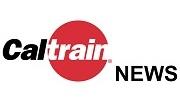Caltrain, the seventh-largest commuter railroad in the country, released its draft Service Vision today for the next 20-plus years of service on the line. During a live YouTube Town Hall event, Caltrain staff highlighted the improvements in service, capacity and connectivity that the plan entails. The draft Caltrain Business Plan 2040 Service Vision aims to ensure that Caltrain can continue to provide the greatest value possible to its riders and the Bay Area well into the future.
“This is a vision that ensures Caltrain can continue to be what it has been for so many years: an indispensable resource for the region and our riders,” Hartnett said. “Our long-range vision will improve frequency, sustainability and connectivity, while ensuring that Caltrain continues to add value to communities at every stop along the way.”
Hartnett continued, “I am very proud of the work done to get the Business Plan to this point. It has been an expansive, rigorous and challenging process that has required all of us to ask big questions and think critically about the future of the Caltrain corridor.”
A vision for the future
Under the vision recommended by Caltrain’s professional staff, fast and frequent service would be the standard on the line every day, all day – ensuring riders and communities are able to get where they need to be safely and efficiently. Over the last two decades, Caltrain ridership has more than doubled, and today Caltrain serves nearly 65,000 passengers per day, on average.
Over the period of this vision, peak hours would see eight trains per direction per hour, with all day Baby Bullet express service every 15 minutes, and increased off-peak and weekend services. This increased frequency, paired with longer trains, would massively expand capacity to nearly 180,000 riders per day. The plan envisions end-to-end, electrified service from Gilroy to San Francisco all day in both directions, improving connections for communities all along the line.
This vision would also ensure that Caltrain is ready to expand and integrate into a regional rail network over the next 20 years including the expected Downtown Extension to the Salesforce Transit Center in Downtown San Francisco, a potential renewed rail corridor across the Dumbarton Bridge and enhancements at Diridon Station in San Jose. It prepares Caltrain for a future shared corridor with High Speed Rail, and considers opportunities presented by a second Transbay crossing, expanded service to the Monterey Peninsula and investments along the Altamont Corridor Express and Capital Corridor services.
Meeting the long-term need
Critically, today’s plan would put Caltrain in the best position to meet a wide range of eventualities – including a future where ridership grows substantially. It also presents a detailed assessment of Caltrain’s organizational structure and lays out options for how it can evolve to meet the demands of the system. While Caltrain has over 70% farebox recovery and low administrative costs, and is among the nation’s most efficient railroads, this plan also reiterates the ongoing need for a dedicated funding source to help provide the resources needed to sustain and grow operations.
In 2017, Caltrain secured full funding to complete the electrification of the Caltrain corridor. Electrification will be complete by 2022, and will provide the foundation for implementation of the 2040 Service Vision. Electrification combined with this vision will help bring more environmentally sustainable commuting to the region, with four million vehicle trips averted each year and an overall reduction of nearly two million metric tons of CO2.
The plan and the path forward
The draft Service Vision released today is a collaborative effort led by Caltrain with funding and participation from various organizations. Development of the Service Vision is the product of hundreds of hours of meetings with cities, counties, business groups, public agency partners, advocates, and public stakeholders throughout the corridor.
Following today’s YouTube Town Hall, the Caltrain Full Board of Directors will next discuss the Business Plan and Long Range Service Vision at their meeting on Thursday, August 1. Once the Caltrain Board adopts a Long Range Service Vision, as early as October 2019, staff will complete the Business Plan by early 2020.
For more information, visit https://www.caltrain2040.org/. To view a list of other in-person meeting locations, visit www.Caltrain2040.org/get-involved.
###
About Caltrain: Owned and operated by the Peninsula Corridor Joint Powers Board, Caltrain provides commuter rail service from San Francisco to San Jose, with limited commute service to Gilroy. While the Joint Powers Board assumed operating responsibilities for the service in 1992, the railroad celebrated 150 years of continuous passenger service in 2014. Planning for the next 150 years of Peninsula rail service, Caltrain is on pace to electrify the corridor, reduce diesel emissions by 97 percent by 2040 and add more service to more stations.
Like us on Facebook at www.caltrain.com and follow on Twitter @Caltrain.
Free translation assistance is available.
